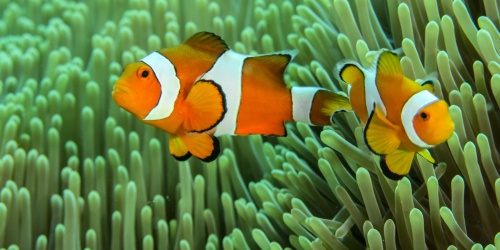
Mantis Shrimp - Photo the Ocean Agency / Adobe
What is a mantis shrimp? Mantis shrimps are crustaceans, like crabs, rock lobsters and other shrimps. They are the only animals to have hyperspectral colour vision and are considered to have the most complex eyes in the animal kingdom. They can see ultraviolet, visible and infra-red light and different planes of polarized light. The shape of their eyes allows them to see things with three different parts of the eye at once.
What do they look like? Many different species of mantis shrimps live in Australian waters. Most of them are less that 15 centimetres long, but some species reach more than 30 centimetres and would appear quite fearsome to a fish! While many are pale blue, green or brown in colour, several tropical species have beautiful colours and patterns, like the one in the movie. Mantis shrimps have eight pairs of legs (the first five pairs are equipped with claws) plus modified legs known as pleopods on their abdomen which are used for swimming. The eyes and the first pair of antennae are attached to separate movable segments on the head.
Where do they live? Mantis shrimps are usually found in shallow, intertidal areas, burrowing into sand or sheltering in rock or coral crevices Australia-wide.
What they eat and how: They are aggressive predators and feed mainly on small fish, other crustaceans and molluscs. They use their large second pair of legs to catch prey. Depending on the species of mantis shrimp, this pair of legs is either equipped with spined claws that are used like spears or hammer-like claws that are used to batter their target. They strike their prey with acceleration of up to 23 metres per second. The shock wave from the force can be enough to stun or even kill the prey. Some larger species with hammer-like claws have even been known to break the glass of aquariums.
Threats: Mantis shrimps have not been well studied but there are no known threats to any species. They may be accidentally caught in crab or prawn nets.
Behaviour: They are typically found alone.
Breeding: Females carry the eggs or lay them in their burrow. After hatching, the larva initially lives on the seafloor but the first or second moult it commences a planktonic stage. During this time it looks very different to the adult. After a few months drifting at sea it again moults to metamorphose into a burrow-dwelling adult.



























